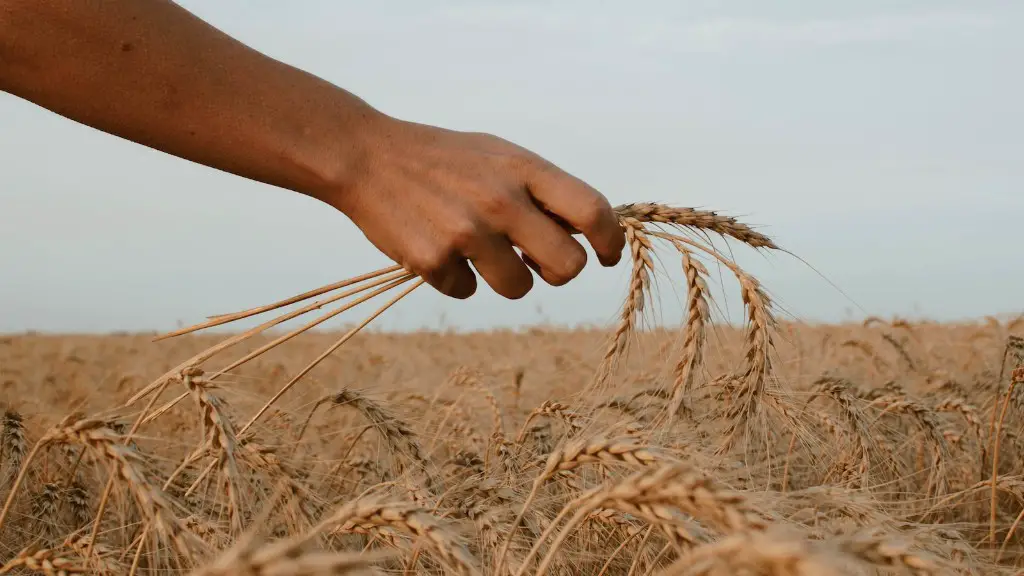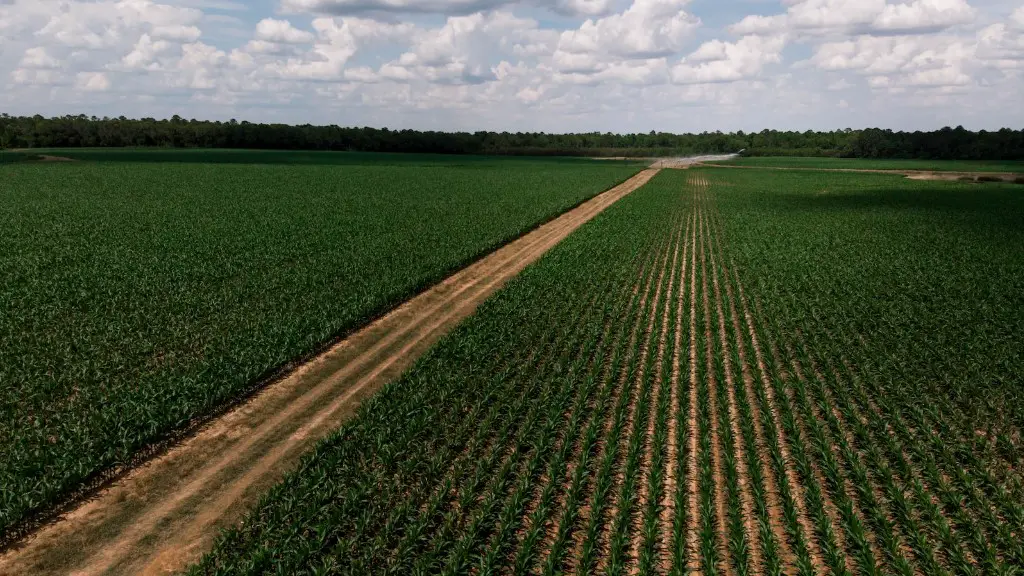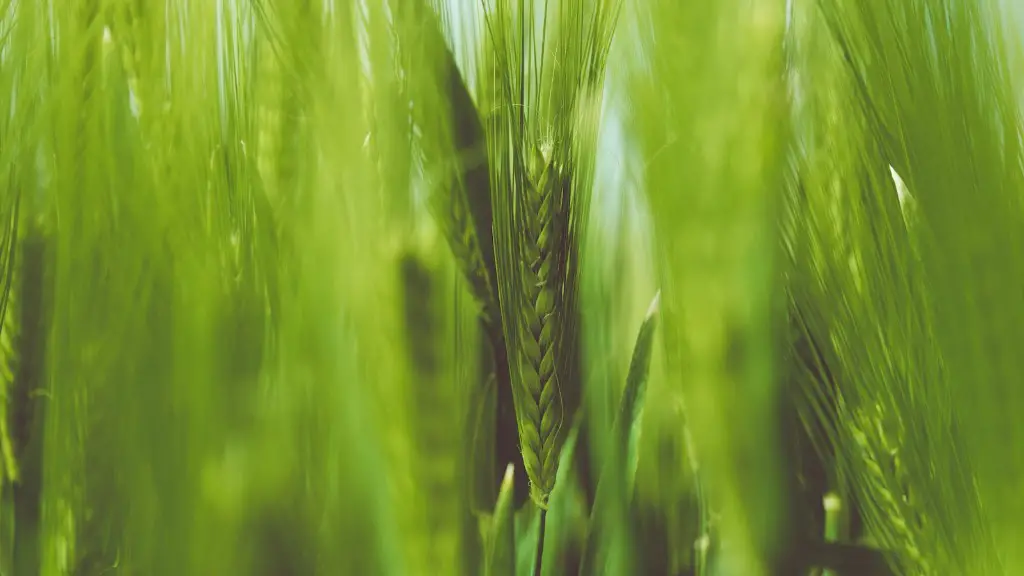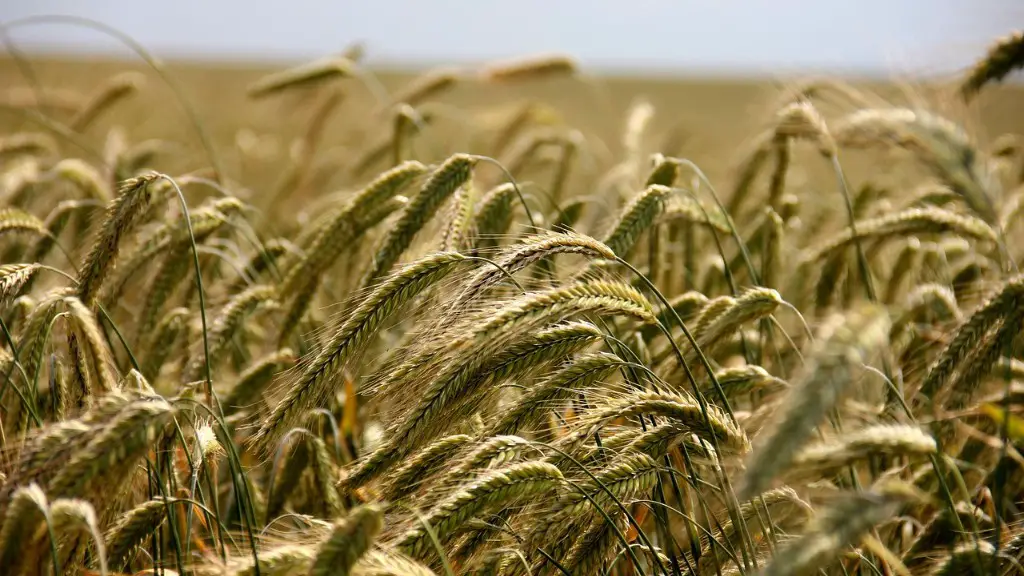In order to use data science in agriculture, one must first understand what data science is and its potential applications to the agricultural field. Data science is the study of where information comes from, what it represents, and how it can be turned into useful knowledge. It encompasses a wide range of methods and tools used to collect, process, and analyze data. Data science can be used in agriculture to improve crop yields, optimize irrigation systems, and forecast demand.
There is a growing need for data scientists in the agricultural industry as farmers and ranchers look for ways to increase efficiency and yield. Data science can be used in agriculture to develop better methods for irrigation, planting, and crop rotation. Additionally, data science can help farmers to understand patterns in weather and climate data in order to make more informed decisions about when to plant and harvest their crops. In the future, data science will likely play an evenlarger role in agriculture as farmers look to maximize their yield while minimizing their impact on the environment.
How data science is applied in agriculture?
Data science is a powerful tool that farmers can use to track their crops, animals, and water usage. By monitoring these data points, farmers can quickly and easily identify pests or diseases present in their fields. Additionally, data science can provide farmers with insights into historical data, including past land usage and hyper-local weather patterns. This information can help farmers make more informed decisions about their crops and land usage.
Precision agriculture is a farming management concept based on observing, measuring and responding to inter and intra-field variability in crops. The goal of precision agriculture research is to define a decision support system for whole farm management with the aim of optimizing returns on inputs, while preserving resources.
AI technology is helping in the development of precision agriculture by providing systems that can detect disease in plants, pests and poor nutrition of farms. AI sensors can detect and target weeds and then decide which herbicide to apply within the region. This technology is helping to improve the overall harvest quality and accuracy.
Which algorithm is used in agriculture
Linear programming is a great tool for optimizing the amount of water a field or crop will need to reach an acceptable yield level. Supervised machine learning algorithms can help ensure that fields and crops get enough water to optimize yields without wasting any in the process.
Agricultural statistics are useful for various purposes, such as planning, monitoring and evaluation, as well as research and development. They also promote investment opportunities. There are three main sources of statistics on crops and livestock: surveys and censuses, administrative sources, and other sources.
What are the 3 most popular applications of AI in agriculture?
Artificial intelligence (AI) has great potential in the agricultural sector. Farmers are already using AI-powered tools to do things like monitor crops and soil, detect diseases in plants and insects, and keep track of livestock health. They can also use AI to automatically spray pesticides and weed crops. In the future, AI may even be used to do things like aerial surveys and produce grading and sorting.
Machine learning is a process of teaching computers to learn from data. This process can be used to discover patterns and trends in data sets, to create forecasting algorithms and data models, and to improve the quality of data or product offerings. Machine learning is a powerful tool that can be used to solve many business problems.
What are 4 robots already used in agriculture?
Agricultural robots are becoming increasingly popular as they offer many advantages over traditional methods of agricultural production. They can work more accurately and efficiently, reducing the need for manual labor. They can also work in difficult or dangerous environments, such as in fields with poisonous weeds or in areas where there is a risk of pesticide exposure. Agricultural robots are still in the early stages of development, but there are already a number of different applications for them, including weed control, autonomous mowing, seeding, spraying, phenotyping, sorting, and packing.
In this work, Machine Learning algorithms such as Decision Tree, K Nearest Neighbor, Linear Regression model, Neural Network, Naïve Bayes and Support Vector Machine were used for recommending a crop to the user. These algorithms were found to be more accurate than the previous algorithms used in similar works.
What is big data in agriculture
The adoption of big data analytics is growing in the agricultural industry as farmers look for ways to improve farm yields. Big data provides farmers with granular data on rainfall patterns, water cycles, fertilizer requirements, and more. This enables them to make smart decisions, such as what crops to plant for better profitability and when to harvest. The right decisions ultimately improve farm yields.
There is a variety of different farm management software available to farmers to help them with their activities. Agrivi, Granular, Trimble FarmERP, and Agworld are all examples of software that can help farmers with tasks such as planning, monitoring, and analyzing data. Each software suite has its own unique features and benefits, so farmers should evaluate each option to see which one would best fit their needs.
How coding can be used in agriculture?
Farmers and the agricultural industry could benefit immensely from robotics. Robots could automate various tasks involved in farming, such as harvesting, soil maintenance, weeding, planting, and fruit picking. This would make farming much easier and more efficient. Additionally, robots could create smart algorithms to help with these tasks. This would further improve the efficiency of farming and help to produce more food for the world.
1. Plant More Densely: By planting more densely, farmers can increase yields while using less water, labor, and land.
2. Plant Many Crops: Growing a mix of crops helps to improve soil health, reduces the risk of crop failure, and can provide a steadier income.
3. Raised Beds: Raised beds can improve drainage, reduce compaction, and increase air circulation to the roots of plants.
4. Smart Water Management: Using irrigation systems more efficiently can help farmers conserve water and reduce pumping costs.
5. Heat Tolerant Varieties: Planting heat tolerant varieties can help farmers adapt to climate change and maintain productivity during periods of extreme heat.
6. Use Nitrogen: Applying nitrogen to crops can help improve yields, as well as the quality of the crop.
7. Improved Seeds: Planting improved seeds can help farmers increase yields and produce crops that are more resistant to pests and diseases.
8. Plant Protection: Using crop protection methods can help farmers reduce losses from pests and diseases.
9. Improved Soil Management: Proper soil management can help farmers improve yields, reduce inputs costs, and build healthier soils.
10.
What are the statistical tools used in agriculture
There is no doubt that descriptive statistics are powerful tools for data analysis. They can provide a quick and easy way to summarise data, as well as helping to identify patterns and relationships. However, it is important to remember that they can only tell us so much. In particular, they cannot tell us causal relationships – only correlations. For this reason, they should be used in conjunction with other methods, such as inferential statistics, to form a complete picture.
The Statistical Tool for Agricultural Research (STAR) is a computer program that was developed to help with data management and basic statistical analysis of experimental data. This tool can be used by anyone conducting agricultural research, and it is especially useful for those working with large data sets. The program is designed to be user-friendly, and it includes a variety of features that make data analysis simpler and more efficient. Some of the key features of STAR include:
-Data import/export:Allows data to be imported from various sources (e.g., Excel, text files) and exported in a variety of formats (e.g., PDF, Word, Excel).
-Data manipulation:Performs various data manipulation tasks (e.g., recode, filter, and sort).
-Data analysis:Includes a range of basic statistical analyses (e.g., means, regression, and correlation).
-Output:Generates customizable reports and charts.
The STAR program is a valuable resource for anyone working with agricultural data. It is quick and easy to use, and it includes a wide range of features that make data analysis simpler and more efficient.
What is statistical model in agriculture?
Statistical models are common tools for quantifying possible impacts of climate change on crops. Climate change involves shifts in both mean and variability of climate parameters, and experimental results and simulations have shown that both mean and variability can have the same-order effects on crop growth and yield.
ML has been extremely useful in agricultural management, helping with everything from yield prediction to disease and weed detection. Additionally, ML has been used to improve crop quality and identify different species. In livestock management, ML has been used to improve animal welfare and production. Finally, ML has also been used in water and soil management.
Which country uses AI in agriculture
Precision agriculture is a farming management concept that uses modern technology to improve the efficiency and productivity of agricultural operations. It covers a wide range of activities such as soil management, crop production, water use, and pest control.
In China, precision agriculture techniques are applied to both small-scale and large-scale farming. Small-scale farmers often use GPS and other tools to map their fields and plan their operations. Large-scale farmers often use precision agriculture to manage large tracts of land and automate their operations.
Precision agriculture has helped China’s farmers increase their productivity and profitability. It has also helped to reduce the environmental impact of agriculture by reducing the amount of inputs used and improving the efficiency of operations.
The researchers say that we need to be aware of the potential risks involved in using AI to grow our food, including cyberattacks, environmental harm, and the exploitation of workers. They warn that these risks are substantial and must not be ignored.
Final Words
The application of data science in agriculture can help farmers to improve their yield and profitability. By analyzing data related to weather, crop growth, and soil conditions, farmers can make informed decisions about when to plant, how to care for their crops, and when to harvest. Additionally, data science can be used to develop new agricultural technologies and to improve existing ones.
In conclusion, data science can be used in agriculture to help farmers more effectively and efficiently manage their crops. By using data science, farmers can make better decisions about when to plant, how to water, and when to harvest. Additionally, data science can be used to develop new and improved methods of agriculture, such as precision farming.





